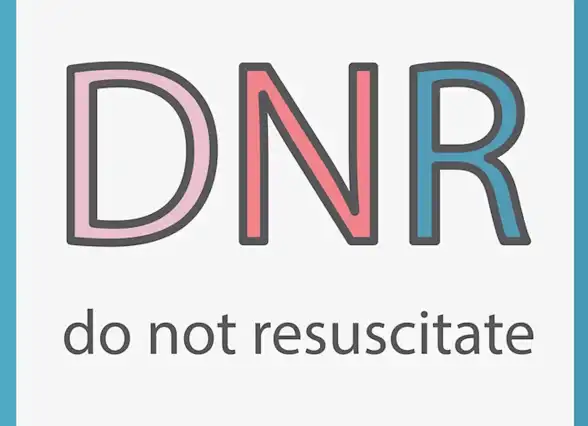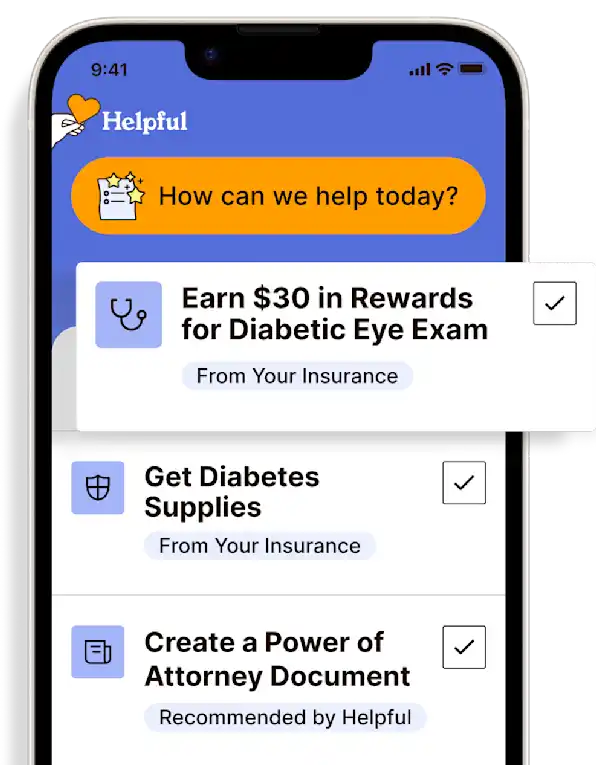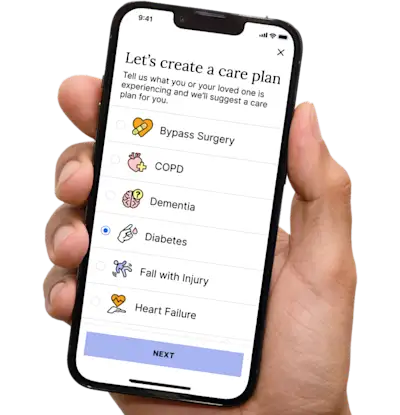Do Not Resuscitate (DNR) Order
A DNR is used when your loved one feels that, due to their health status, resuscitation benefits are limited or don't align with their preferences.
Get insurance benefits, legal documents, and medical records in one place

Helpful Highlights
DNR is derived from do-not-resuscitate, and there are both in-hospital and out-of-hospital (portable or pre-hospital) versions.
A DNR form requires a provider's review and signature, and the signed form must be in English.
For links to available DNR templates by state, see that state's POLST and DNR Forms content.
For information on other medicolegal forms (such as Healthcare POA), visit our Legalities stack or search our state-specific Medical and Financial Legal Forms content.
A DNR ORDER IS IN EFFECT UNTIL IT IS FORMALLY REVOKED.
A DNR order can only be revoked by your loved one or your loved one's primary provider.
A DNR order cannot be revoked by any family member, any power of attorney, or any other healthcare representative.
Why DNR?
Personalized chronic care management and quality end-of-life care continue to be a significant challenge in America.
The standard of care during cardiopulmonary (heart and lung) arrest is to deliver cardiopulmonary resuscitation (CPR); however, not everyone wants to be resuscitated - often those with advanced chronic illness or nearing the end of life. Having a discussion with a provider and completing a DNR form is one way to ensure that your loved one's preferences are respected, recorded, and followed.
DNR explained
DNR is a medical document that translates your loved one's resuscitation preferences into medical orders. It is used in the case of cardiopulmonary distress or arrest*. The DNR form is completed in consultation with a healthcare provider and it includes instructions about whether or not your loved one wants resuscitation.
*Distress = The heart and/or the lungs are working so poorly that they are not adequately supplying the body with blood and oxygen -OR- they are working so hard to do their job that they will soon become exhausted, weak, and stop.
*Arrest = The heart and/or the lungs have stopped working altogether. (One cannot work without the other, so if breathing stops, the heart will quickly follow.)
If your loved one does not have a standing out-of-hospital DNR that "travels" with them, meaning it is valid regardless of where they receive services, then upon admission to a hospital, the hospital will ask your loved one's resuscitation preferences and record them. However, this is not a portable DNR, meaning it does not go with your loved one after discharge from the hospital and is only valid within that hospital.
Different from an advance directive
Unlike an advance directive, the DNR form is a medical order that can be used immediately by healthcare providers - everyone from the PCP to EMS to hospital staff - helping to ensure that your loved one's wishes are followed. In other words, a provider does not have to wonder if your loved one wants to be resuscitated and can take action (or not take action) at the point of cardiopulmonary distress or arrest.
However, like a DNR form, an advance directive may be used to express resuscitation preferences to healthcare providers, though many people have both an advance directive and a DNR form. This is because an advance directive must be reviewed by a provider who then has to write and record resuscitation orders, consuming valuable time. With a DNR form, healthcare providers can act (or not act) immediately and without question.
Different from physician orders for life-sustaining treatment (POLST)
A DNR and a POLST are related but serve different purposes. While both a DNR and a POLST deal with end-of-life medical decisions, a POLST is a more comprehensive document covering various life-sustaining treatments, whereas a DNR only addresses the decision regarding resuscitation.
Individuals may have both a POLST and a DNR order, depending on their healthcare preferences and medical conditions, and the resuscitation directive in both documents should match. Note, however, that a separate DNR order is not necessary since the POLST form includes a resuscitation directive.
Different from allow natural death (AND)
DNR and AND are similar in that both respect your loved one's wishes for end-of-life care, but AND is a more general approach that emphasizes allowing the dying process to proceed naturally, without aggressive or ineffective life-prolonging measures. It includes a broader range of decisions beyond just resuscitation, such as preferences for withholding other interventions or treatments. AND may not be as widely recognized or used as DNR orders and its interpretation can vary.
In essence, while both DNR and AND express your loved one's desire for a natural death, DNR specifically addresses resuscitation, whereas AND is a more comprehensive approach to end-of-life care. The choice between the two depends on your loved one's preferences and the level of detail they want to express regarding end-of-life care, as well as the availability and recognizability of AND orders in their state.
No content in this app, regardless of date, should ever be used as a substitute for direct medical advice from your doctor or other qualified clinician.
Likewise, no content in this app, regardless of date, should ever be used as a substitute for any direct legal advice you receive from your lawyer or other qualified legal professionals.
Get more support and guidance on insurance benefits, medical records and legal forms.
Helpful brings together your insurance benefits, legal documents, and medical records in one personalized place — so you always know what you have, and never have to search again.

Technology for Health Tasks. Mental Health for the Tough Stuff.
Helpful connects your medical records, insurance, and caregiving tasks automatically. And when you need more than logistics, a therapist is here to guide you.
In-Network and Covered
For Individuals, Couples and Families
HIPAA Compliant, Data Stays Private


Healthcare Tasks Simplified

From syncing records to spotting drug interactions, Helpful does the heavy lifting, turning complex health info into clear tasks and showing you benefits you can actually use, giving you clarity and control over your care.

In-Network Mental Health

Our licensed therapists are here to support you and your loved ones through stress, burnout, and life’s hardest moments, with an inclusive, compassionate approach that works with most insurance plans.

Create Legal Documents

Plan ahead by creating will, trusts, advance directives and more, that ensure your wishes are honored in the event you can’t speak for yourself -with Helpful guiding you every step of the way.